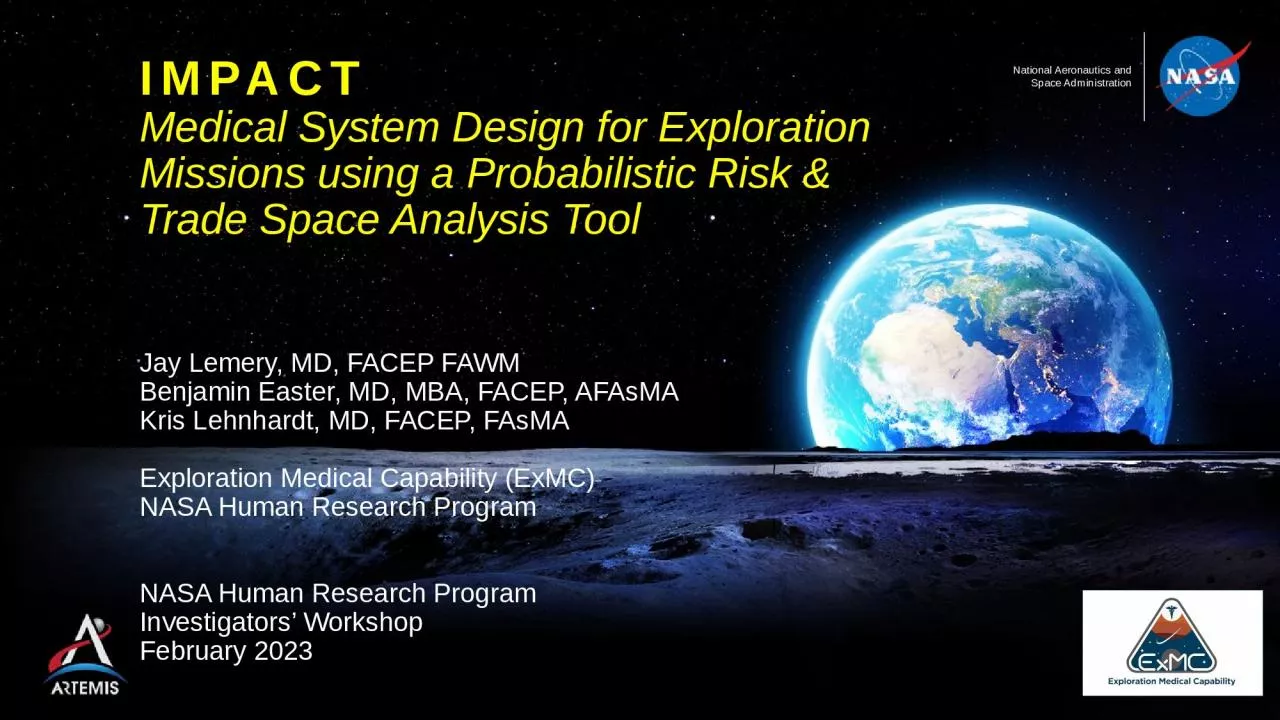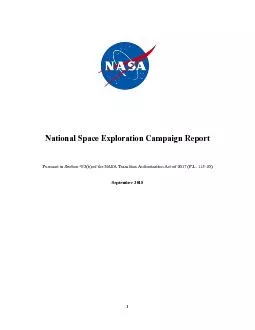PPT-IMPACT Medical System Design for Exploration Missions using a Probabilistic Risk &
Author : lily | Published Date : 2024-01-03
Jay Lemery MD FACEP FAWM Benjamin Easter MD MBA FACEP AFAsMA Kris Lehnhardt MD FACEP FAsMA Exploration Medical Capability ExMC NASA Human Research Program NASA
Presentation Embed Code
Download Presentation
Download Presentation The PPT/PDF document "IMPACT Medical System Design for Explora..." is the property of its rightful owner. Permission is granted to download and print the materials on this website for personal, non-commercial use only, and to display it on your personal computer provided you do not modify the materials and that you retain all copyright notices contained in the materials. By downloading content from our website, you accept the terms of this agreement.
IMPACT Medical System Design for Exploration Missions using a Probabilistic Risk &: Transcript
Download Rules Of Document
"IMPACT Medical System Design for Exploration Missions using a Probabilistic Risk &"The content belongs to its owner. You may download and print it for personal use, without modification, and keep all copyright notices. By downloading, you agree to these terms.
Related Documents














